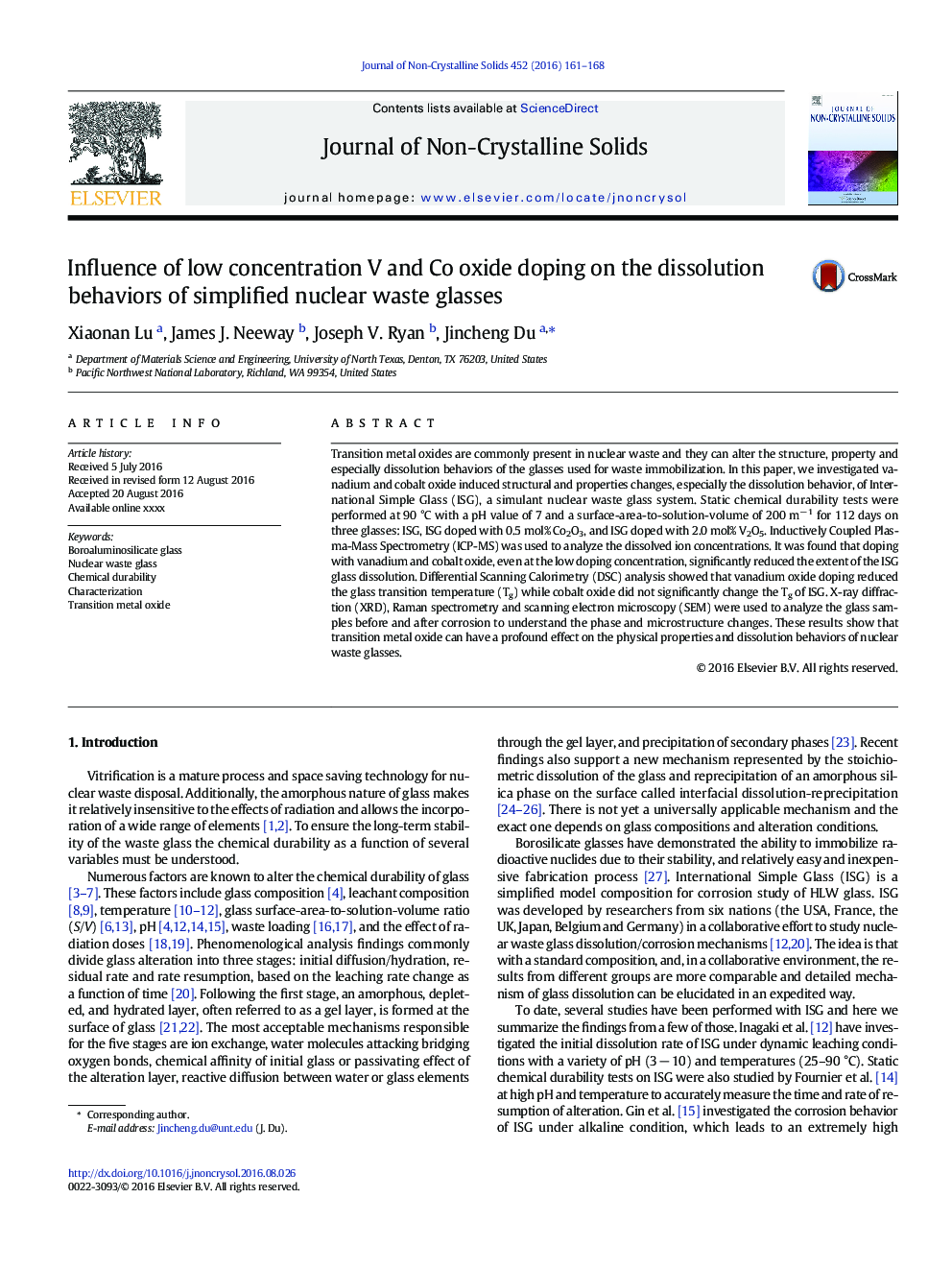| Article ID | Journal | Published Year | Pages | File Type |
|---|---|---|---|---|
| 7900567 | Journal of Non-Crystalline Solids | 2016 | 8 Pages |
Abstract
Transition metal oxides are commonly present in nuclear waste and they can alter the structure, property and especially dissolution behaviors of the glasses used for waste immobilization. In this paper, we investigated vanadium and cobalt oxide induced structural and properties changes, especially the dissolution behavior, of International Simple Glass (ISG), a simulant nuclear waste glass system. Static chemical durability tests were performed at 90 °C with a pH value of 7 and a surface-area-to-solution-volume of 200 mâ 1 for 112 days on three glasses: ISG, ISG doped with 0.5 mol% Co2O3, and ISG doped with 2.0 mol% V2O5. Inductively Coupled Plasma-Mass Spectrometry (ICP-MS) was used to analyze the dissolved ion concentrations. It was found that doping with vanadium and cobalt oxide, even at the low doping concentration, significantly reduced the extent of the ISG glass dissolution. Differential Scanning Calorimetry (DSC) analysis showed that vanadium oxide doping reduced the glass transition temperature (Tg) while cobalt oxide did not significantly change the Tg of ISG. X-ray diffraction (XRD), Raman spectrometry and scanning electron microscopy (SEM) were used to analyze the glass samples before and after corrosion to understand the phase and microstructure changes. These results show that transition metal oxide can have a profound effect on the physical properties and dissolution behaviors of nuclear waste glasses.
Keywords
Related Topics
Physical Sciences and Engineering
Materials Science
Ceramics and Composites
Authors
Xiaonan Lu, James J. Neeway, Joseph V. Ryan, Jincheng Du,
